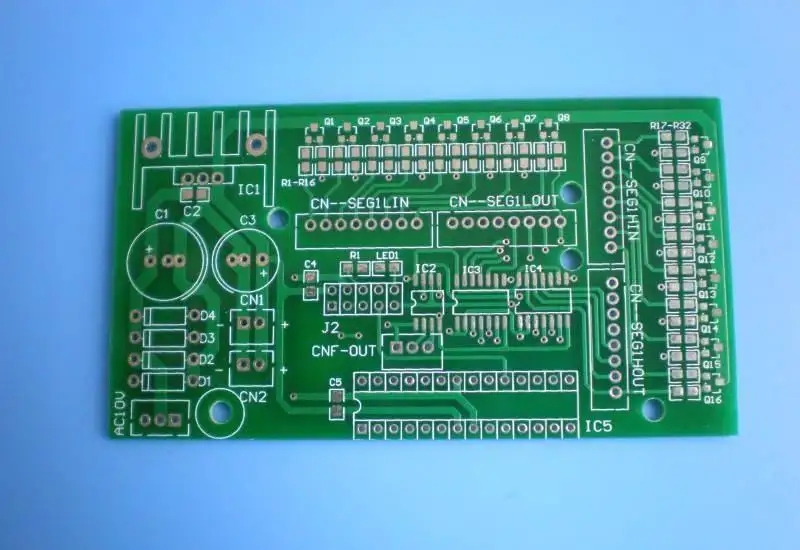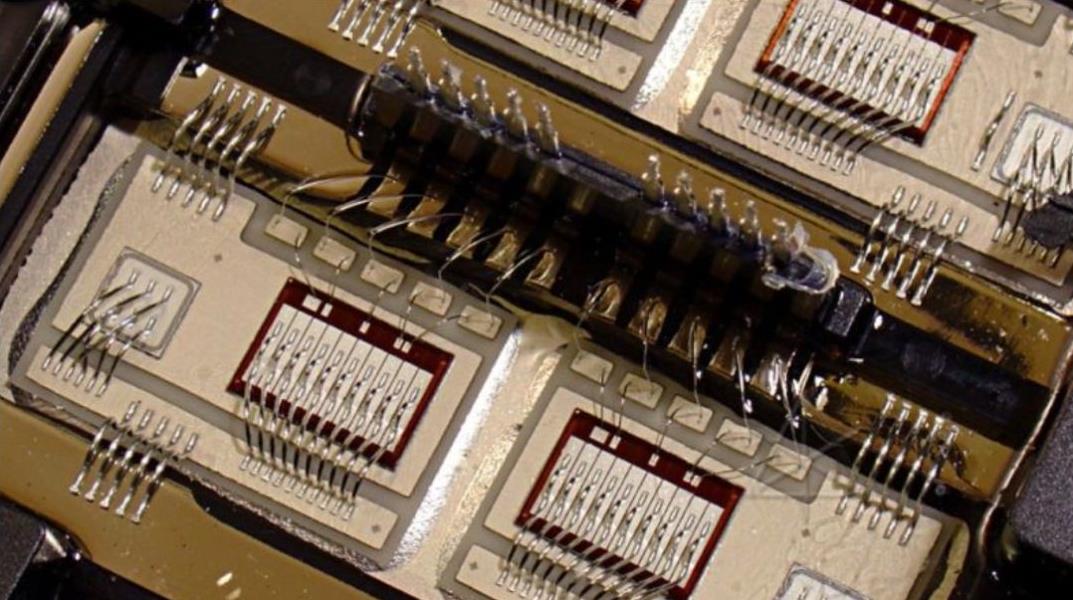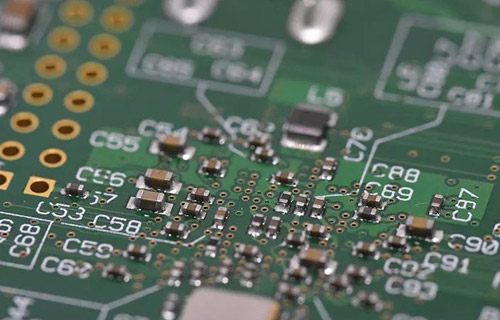
Electronic Engineering Explain Multilayer Circuit Board Lamination Technology
With the rapid development of electronic technology, it has promoted the continuous development of printed circuit board technology. PCB board has developed through single-sided, double-sided and multi-layer development, and the proportion of PCB multilayer board is increasing year by year. At the same time, PCB multilayer boards are also developing towards the two extremes of high, fine, dense, thin, large and small. One of the important processes in PCB multilayer manufacturing is lamination, and the control of lamination quality is becoming more and more important in multilayer manufacturing. Therefore, to ensure the laminated quality of PCB multilayer boards, it is necessary to have a better understanding of the laminated process of PCB multilayer boards.
How to improve the laminating quality of multilayer circuit board is summarized as follows in terms of process technology:
1、 The inner core plate designed to meet the lamination requirements
Due to the gradual development of laminating machine technology, the hot press has changed from the previous non vacuum hot press to the current vacuum hot press. The hot pressing process is in a closed system, which can not be seen or touched. Therefore, it is necessary to reasonably design the inner PCB before laminating. Here are some reference requirements:
1. There should be a certain distance between the overall dimensions of the core board and the effective units, that is, the distance between the effective units and the PCB edge should be as large as possible without wasting materials. Generally, the distance between four layers of boards is required to be greater than 10mm, and the distance between six layers of boards is required to be greater than 15mm. The higher the number of layers, the greater the distance.
2. The inner core board of PCB circuit board shall be free of open, short, open circuit, oxidation, clean board surface and residual film.
3. The core board thickness shall be selected according to the total thickness requirements of PCB multilayer boards. The core board thickness shall be consistent, the deviation shall be small, and the cutting warp and weft directions shall be consistent. Especially for PCB multilayer boards with more than 6 layers, the warp and weft directions of each inner layer core board must be consistent, that is, the warp direction overlaps with the warp direction, and the weft direction overlaps with the weft direction to prevent unnecessary bending of the board.

4. For the design of positioning holes, in order to reduce the deviation between layers of PCB multilayer boards, it is necessary to pay attention to the design of positioning holes for PCB multilayer boards: for 4-layer boards, only more than 3 positioning holes are required for drilling. In addition to the design of locating holes for drilling, more than 5 overlapping locating rivet holes for layers and more than 5 locating holes for tool plates for rivets shall be designed for multilayer PCB circuit boards with more than 6 layers. However, the higher the number of layers of the designed locating holes, rivet holes, and tool holes are, the more the number of designed holes should be, and the location should be as close to the edge as possible. The main purpose is to reduce the alignment deviation between layers and leave more space for production and manufacturing. The target shape shall be designed to meet the requirements of automatic recognition of target shape by the shooting machine as much as possible, and generally designed as a complete circle or concentric circle.
2、 Meet the requirements of PCB users, and select appropriate PP and CU foil configurations
The customer's requirements for PP are mainly shown in the thickness of the dielectric layer, dielectric constant, characteristic impedance, withstand voltage, and the smoothness of the laminate surface. Therefore, when selecting PP, you can choose according to the following aspects:
1. Ensure the bonding strength and smooth appearance;
2. Resin can fill the gap of printed wire during lamination;
3. It can provide necessary dielectric layer thickness for PCB multilayer boards;
4. The air and volatile matter between laminations can be fully eliminated during lamination;
5. CU foil is mainly configured with different models according to PCB user requirements, and the quality of CU foil meets IPC standards.
3、 Treatment process of inner core plate
When PCB multilayer boards are laminated, the inner core boards need to be treated. The treatment process of inner layer plate includes black oxidation treatment process and browning treatment process. The oxidation treatment process is to form a layer of black oxide film on the inner copper foil. The thickness of the black oxide film is 0.25-4). 50 mg/cm2. The browning process (horizontal browning) is to form an organic film on the inner copper foil. The role of the inner laminate treatment process is:
1. Increase the specific surface of the inner copper foil and the resin to enhance the adhesion between them;
2. The multi-layer circuit board can improve the acid resistance and prevent the pink circle in the wet process;
3. Resist the decomposition of dicyandiamide curing agent in liquid resin at high temperature - the influence of water on copper surface;
4. Increase the effective wettability of the melt resin on the copper foil when flowing, so that the flowing resin has sufficient ability to penetrate into the oxide film, and show strong grip after curing.
4、 Organic matching of lamination parameters
The control of PCB multilayer laminate parameters mainly refers to the organic matching of "temperature, pressure and time".
1. Temperature
There are several important temperature parameters during lamination. That is, the melting temperature of the resin, the curing temperature of the resin, the set temperature of the hot disk, the actual temperature of the material and the change of the heating rate. Melting temperature means that the resin begins to melt when the temperature rises to 70 ℃. It is precisely because of the further increase in temperature that the resin further melts and starts to flow. During the period of 70-140 ℃, the resin is easy to flow. It is precisely because of the fluidity of the resin that the resin can be filled with glue and wetted. As the temperature gradually increases, the fluidity of the resin changes from small to large and then to small. Finally, when the temperature reaches 160-170 ℃, the fluidity of the resin is 0, and the temperature at this time is called the curing temperature.
In order to make the resin better filled and wetted, it is important to control the heating rate. The heating rate is the embodiment of the laminating temperature, that is, to control when and how high the temperature rises. The control of heating rate is an important parameter for the laminating quality of PCB multilayer boards. The heating rate is generally controlled at 2-4 ℃/MIN. The heating rate is closely related to different types and quantities of PP.
For 7628PP, the heating rate can be faster, that is, 2-4 ℃/min; for 1080 and 2116PP, the heating rate can be controlled at 1.5-2 ℃/min. At the same time, there is a large amount of PP, and the heating rate cannot be too fast, because the heating rate is too fast, the wettability of PP is poor, the resin fluidity is large, and the time is short, which is easy to cause sliding plates and affect the laminating quality. The temperature of hot plate mainly depends on the heat transfer of steel plate, steel plate and kraft paper, which is generally 180-200 ℃.
2. Pressure
The laminated pressure of PCB multilayer board is based on the basic principle that whether the resin can fill the interlayer cavity and exhaust the interlayer gas and volatile matter. As the hot press is divided into non vacuum press and vacuum hot press, there are several ways from pressure: one stage pressurization, two stage pressurization and multi stage pressurization. General pressurization and two-stage pressurization are adopted for general non vacuum press. The vacuum pumping unit adopts two-stage pressurization and multistage pressurization. Multi section pressurization is usually used for high, fine and thin multilayer plates. The pressure is generally determined according to the pressure parameters provided by PP suppliers, generally 15-35kg/c.
PCB manufacturers, PCB designers and PCBA manufacturers will explain electronic engineering and multi-layer PCB lamination technology.







